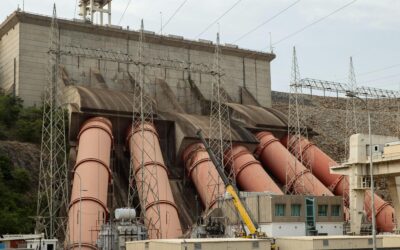The Texas Comptroller’s Broadband Development Office (BDO) has announced a $200 million Notice of Funding Availability (NOFA) to expand middle-mile broadband infrastructure across the state. Applications are due Nov. 20, 2025.
The Texas Middle Mile (TMM) Program is designed to build the next generation of high-speed middle-mile infrastructure, addressing gaps in the state’s broadband network and bridging digital divides statewide. Removing these gaps will streamline and reduce costs for internet service providers to provide last-mile service to customers. The BDO is anticipating awarding grants and funds up to $50 million per project.
Eligible applicants include political subdivisions of the state and commercial or non-commercial entities that offer middle-mile broadband service. All projects will contribute to promoting resilient, future-proofed infrastructure providing high-speed internet at accessible, affordable prices. To accomplish that, deployments must attain minimal technical and commercial specifications for end users, including:
- Support transmissions speeds of at least five gigabit per second (gbps) for downloads and uploads.
- Have round-trip network latency of no more than 100 milliseconds at the 95th percentile.
- Provide reliable service with minimal package loss.
Projects that will be eligible for selection must propose solutions considering the following areas:
- Project Route Consideration.
- Affordability.
- Open Access Requirements.
- Network Resiliency.
Project routes should be in areas where middle-mile deployment will predominately impact unserved or underserved communities. These areas include those that have limited broadband access and will contribute to the development or expansion of last-mile broadband infrastructure. In addition, all broadband offices serving these communities must provide affordable service for those who don’t have viable alternatives. These projects may enable competitive and affordable wholesale pricing for last-mile providers, support the extension of affordability programs or other solutions that reduce the cost burden on customers.
All approved projects must offer non-discriminatory open access to and use of its network to providers interested in using the network to provide middle-mile or last-mile service. Finally, any effort funded through the TMM Program should promote network resiliency, including developing alternative network connection paths that prevent single points of failure along broadband networks.
To have their projects considered, applicants must provide further information on how their design accounts for reducing service disruption vulnerabilities caused by disasters, line cuts or other hazards. Plans should include how the project will use redundant paths, diverse routing, hardened infrastructure and other solutions to enhance service continuity. In addition, applicants should propose innovative approaches to optimizing network resiliency, such as using alternative infrastructure corridors or creative route engineering.
Photo by Brett Sayles from Pexels







